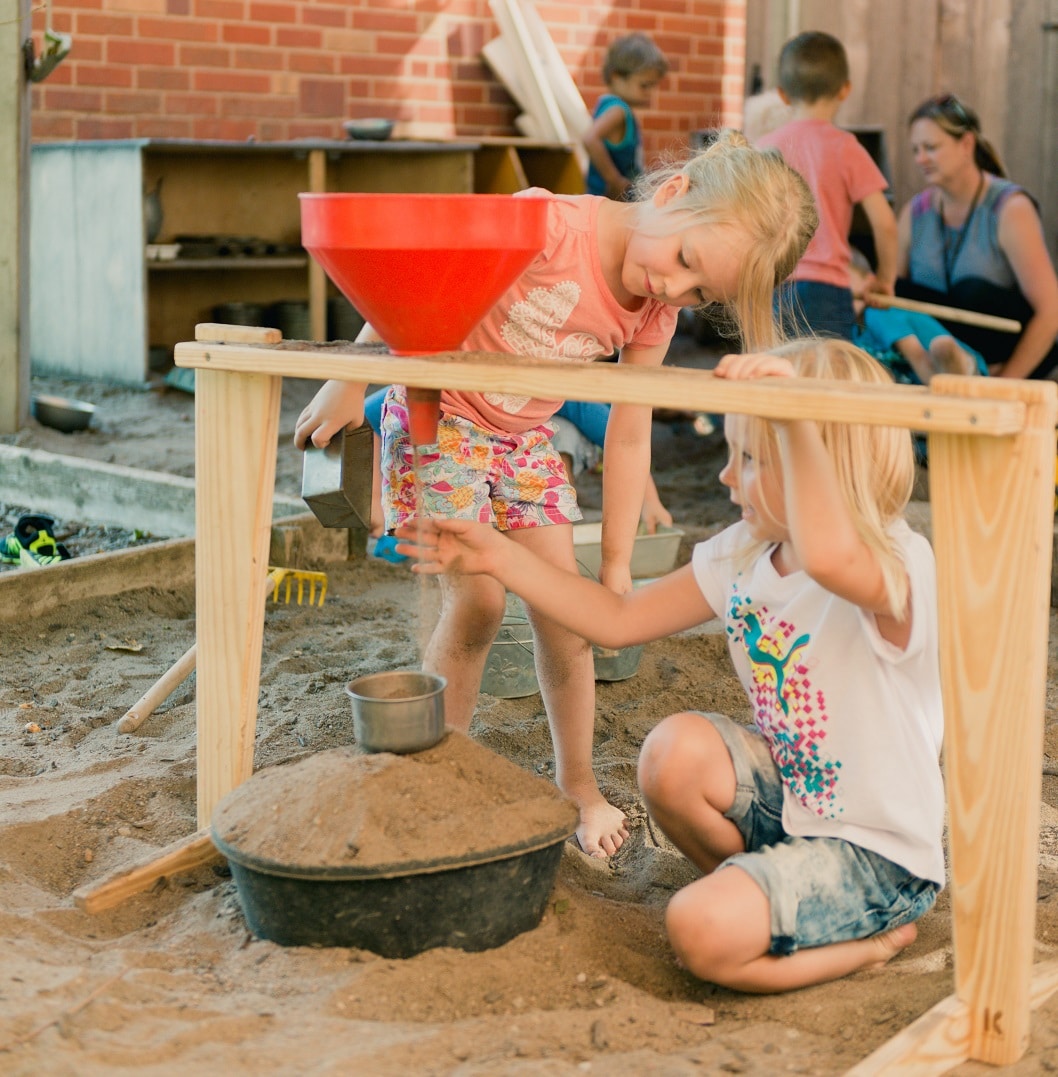Now, and Later

The child who walks the entire balance log successfully, and calls for her teacher to watch, owns that learning. She is thrilled by her success. She had been on a mission to walk that log without falling. From this learning period, and from her repeated walks along the log, her balance will be enhanced and strengthen. All the trials on the way to her goal were self-motivated. “Watch me. I can do it,” she exclaims. She owns this learning, and is thrilled by it.
Owned learning simply feels different than required learning. How many people do you know who can’t wait for their days off from work to avidly explore a hobby? Sports, photography, fishing, making music. These are the activities that give us joy when we can engage in them as we wish and each of these hobbies required a learning curve; one that we chose. Required learning can be very satisfying. But owned learning, especially in young children, digs in deeply.
When children play freely in their Nature Explore Classroom they are learning what they want to learn, when and how they want to learn it. When they play with rocks, sorting by color, we see classification skills being developed. When they draw from nature we see close observation and fine motor control being learned. Daily, we have countless opportunities to scaffold the learning, or just to celebrate it. Both reactions deepen the child’s sense of self-efficacy, and pride in learning.
Where does all this seemingly momentary learning go? After all, the child who successfully walks the length of the balance log will probably lose her passion for that activity after she can perform it easily, yet her everyday balance will have been improved. The boy may forget his rocks in time, yet he will be better able to identify commonalities in objects when the rocks have been forgotten. This is one of the ways that learning progresses in us all.
Yet there is another, more subtle benefit derived from the owned learning of childhood play and exploration. David Hawkins was a scientist and philosopher whose theories on education informed progressive educators during the latter half of the last century. Along with his educator wife, Frances, David was a master at presenting children with materials and environments that they relished exploring. Whether it was a pond or a pendulum, David and Frances could capture children’s imagination and inspire owned learning. David firmly believed that today’s childhood play with pendulums, the physical and intellectual experience, remained inside, to be released later in adapted and unseen forms. Years later, when studying physics and math in formal instruction, the long ago experiences of play will inform a sense of familiarity with the current formal learning. We’re seldom able to connect the two consciously, but the connection is there.
The next time you hear an excited, “Watch this. I can do it!” think of the power of this learning. Years from now that moment may find expressions in many areas of her adult life. These moments happen often in Nature Explore Classrooms: one of the many reasons to love what we do. Looking to see this learning? Visit one of more than 300 certified Nature Explore Classrooms in the United States. Click here for a listing.

